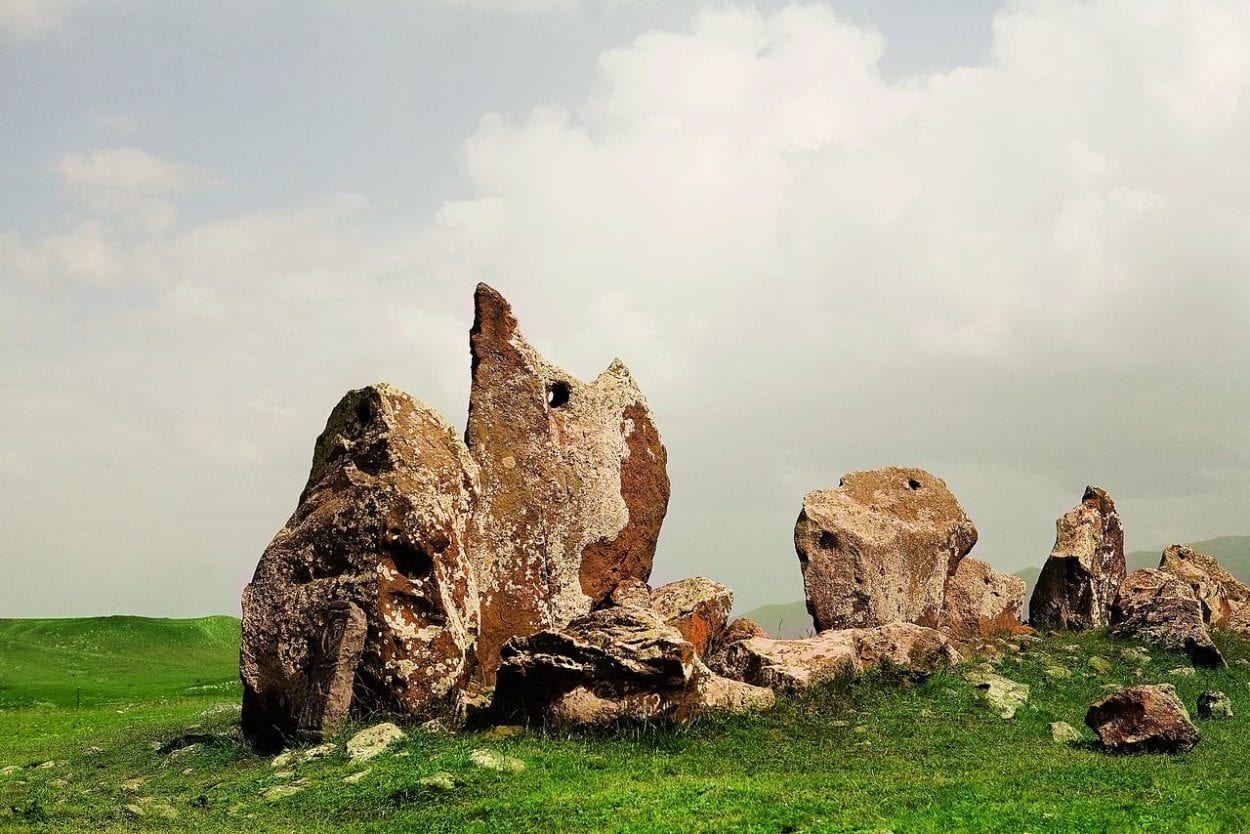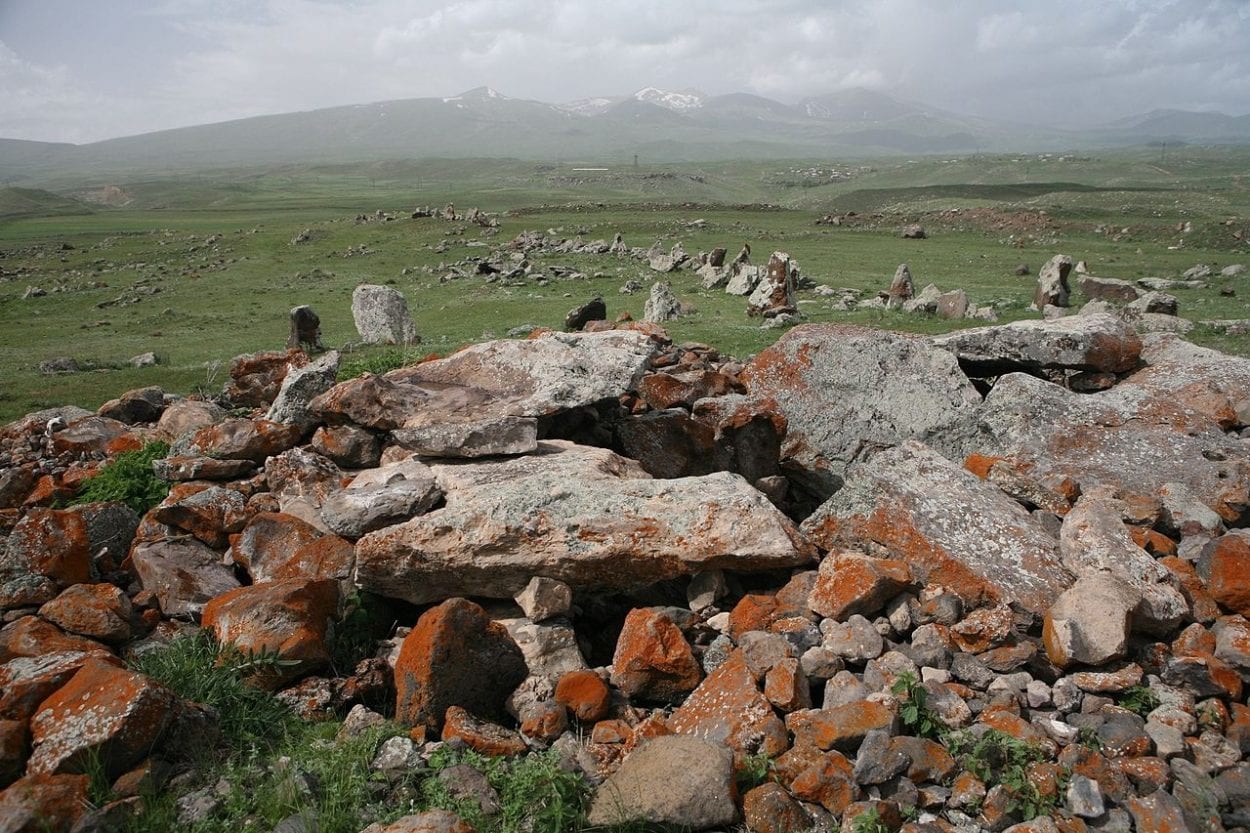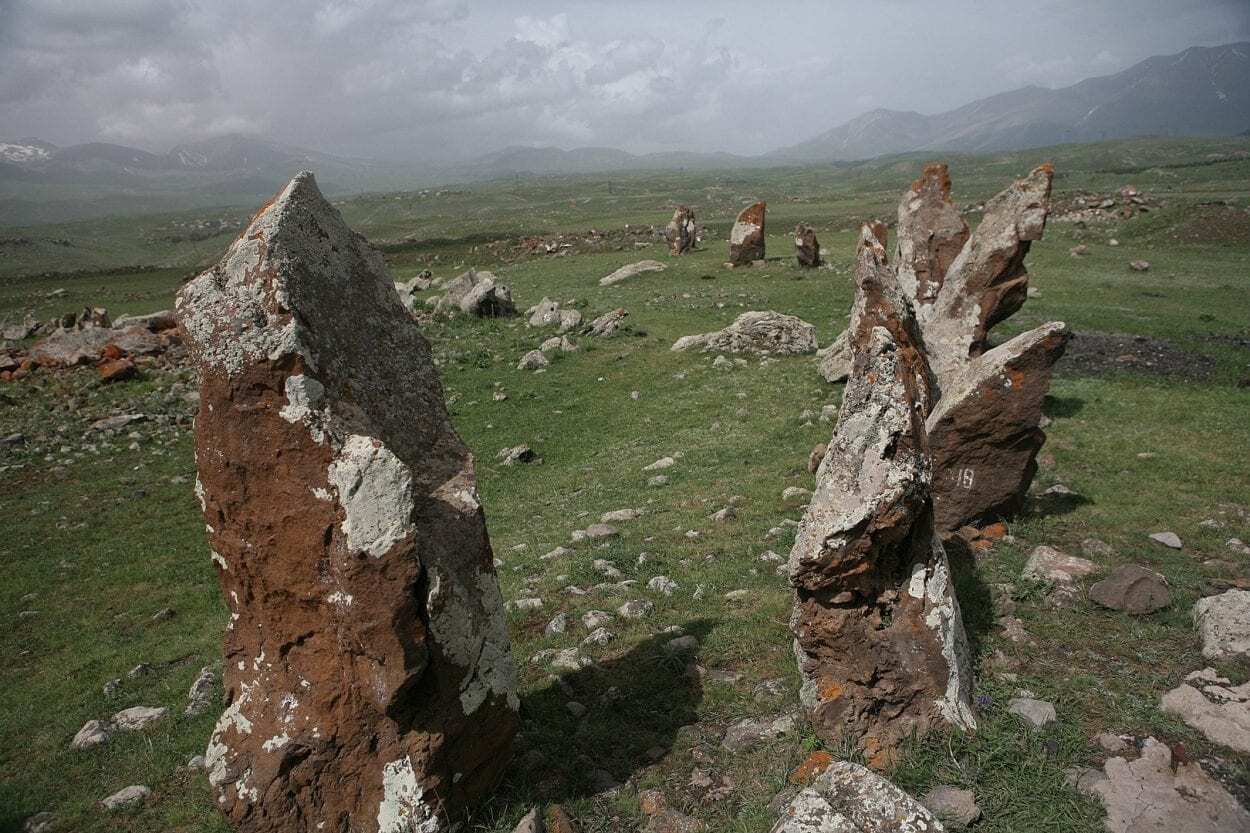Karahundj, also called Carahunge and Zorats Karer is an ancient stone complex, constructed on a mountain plateau in the Syunik Province of Armenia.
Carahunge was named by astrophysicists from the Byurakan Astrophysical Observatory of the former USSR and can be interpreted from the words “car” (meaning stone) and hunge (meaning sound), that loosely translates as “speaking stones”. This probably derives from the fact that the stones create a whistling sound when the wind rushes through holes bored into the monuments.
The stones were always known locally as Ghoshun Dash, meaning “Army of Stones” in Turkic and were associated in mythology as being dedicated to fallen soldiers from a great war. In recent years, the stones are generally referred to as Zorats Karer in academic texts from the Armenian translation.
The complex covers an area of 17.2 acres and consists of various Bronze Age tombs, and over 220 standing stone monuments positioned in a central ring, with rows of stones of various sizes branching outwards.

The stones were carved from basalt, ranging in height from 0.5 to 3 metres above ground. Around 80 stones feature a circular hole measuring two inches in diameter, but may date from a later period, as the holes appear relatively un-weathered when compared to the exposed surface on each stone monument.
During the Christian era, many of the stones had crosses carved into the rock, with some stones being completely altered into Khachkars (a carved, memorial stele bearing a cross), normally erected for the salvation of the soul, to commemorate a battle, construction of a church, or to prevent a natural disaster.
Decades of scientific study from the 1980’s to present have excavated megalithic tombs and a Bronze/Iron Age community at Karahundj, with various interpretations as to the sites purpose ranging from an astronomical observatory, ritual monuments for a necropolis, or even a refuge during times of war in the Hellenistic period.

Excavations of some of the tombs discovered pottery in the lower stratigraphic layers, that have similar characteristics of pottery from the early period of the “Sevan-Artsakh” culture that dates from around the 13th century BC, whilst some graves are believed to date from as early as 2000-1800 BC.
To this day, Karahundj remains a highly contested site, both in terms of the appropriate name for the site, and the purpose and dating of the monument.
Header Image Credit : MEDIACRAT – Wow! Armenia – CC BY-SA 3.0





